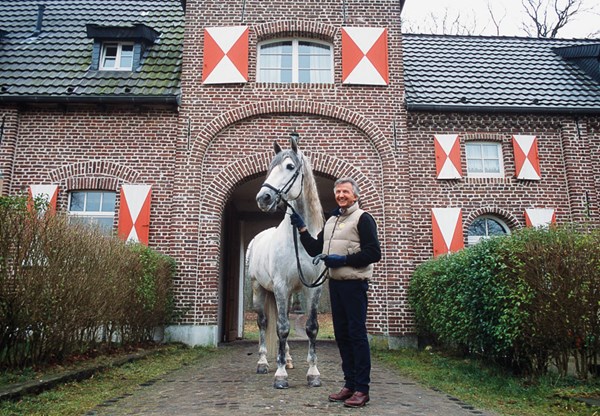Goodbye, quilted, zip-up, Carharts Coveralls! See ya next winter…

Ahhh, finally—a long-range forecast of sparkling warmth and sunny weather instead of a heartbreaking tease of a mild weekend before another frigid event. The sun is higher in the sky, and blankets are going through the heavy-wash cycle at the laundromat before being tucked away in tack boxes.
And Forrest, who arrived in late December, freshly clipped and kept warm with fleecy liners beneath his heavyweight Rambo, began to sport a short, thick, coat, which now is beginning to shed in earnest.
This is the perfect time of year to back or re-start a horse!
Since last week, our “Cinderfella” in training has graduated from his infrequent longeing sessions in the paddock into the dressage arena, and he has also made the progression from halter to bridle.
Having used my dressage partitions to divide the arena in half to give him a helpful perimeter to maintain his confidence and assist him in turning, we begin this first session, again, not lasting more than 15 minutes, including the warm-up walk on straight lines around the entire arena. I have threaded the longeline through the inside ring of his snaffle, over his head, clipping it onto the outside ring. Some people prefer to attach the line running through both rings, beneath the chin, but I prefer the manner I’ve chosen. Both methods, it should be noted, certainly can exert pressure: underneath, a “nutcracker” effect to the jaw, overhead, a “war bridle” effect. Being mindful of this, a careful contact, with no jerking, is a must. I, of course, am wearing my longeing gear: helmet, gloves and paddock boots.
Once warmed up walking around the whole arena, I bring Forrest into one half of the arena and ask for a forward, marching walk. I’m looking for those inverted “Vs” of his fore and hind legs to tell me his gait his pure and four-beat. We begin, as usual, to the right, and if he loses his balance at all, I can simply point the whip at him with the vocal command he now knows well, “O-ver,” to keep him out at the end of the line.

Once I can see that he is traveling straight in the shoulders (if you’re not sure, simply look at your horse’s hoof prints in the sand—does the hind foot step to the inside or outside of the print left by the fore, or directly into, and, hopefully, over it?), I can encourage him to walk with more energy and a consistent rhythm, just as I would if I were riding him. Because he is straight, he is confident in his balance and his body exudes relaxation, the first elements of The Training Pyramid.
After practicing a few walk–halt–walk transitions, we move into trot. I have Fozzy, my retired, sensible, 23-year-old Dutch gentleman grazing very close, at the bottom of the bank of the open arena. I generally back and start all my greenies with him around. I find it very good for a horse’s brain to introduce them to work with a potential distraction nearby, and therefore becoming used to other horses in the area during schooling, instead of having a meltdown.
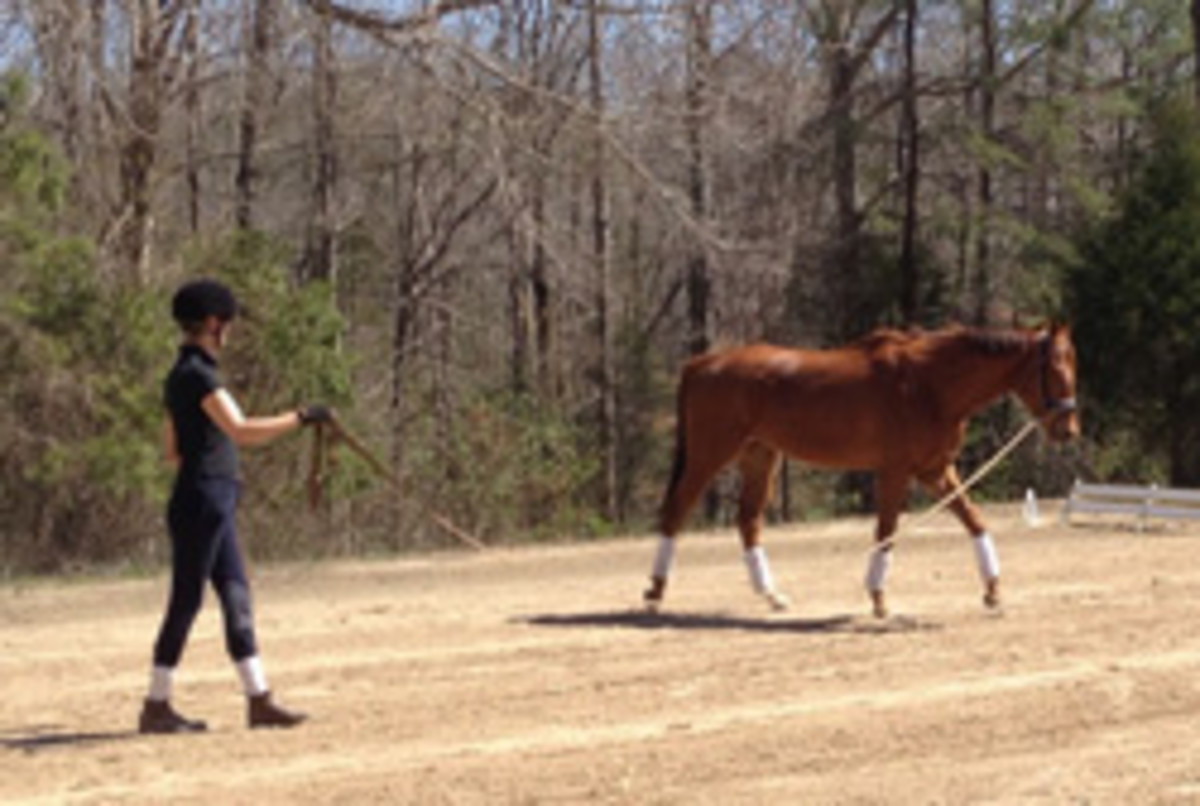
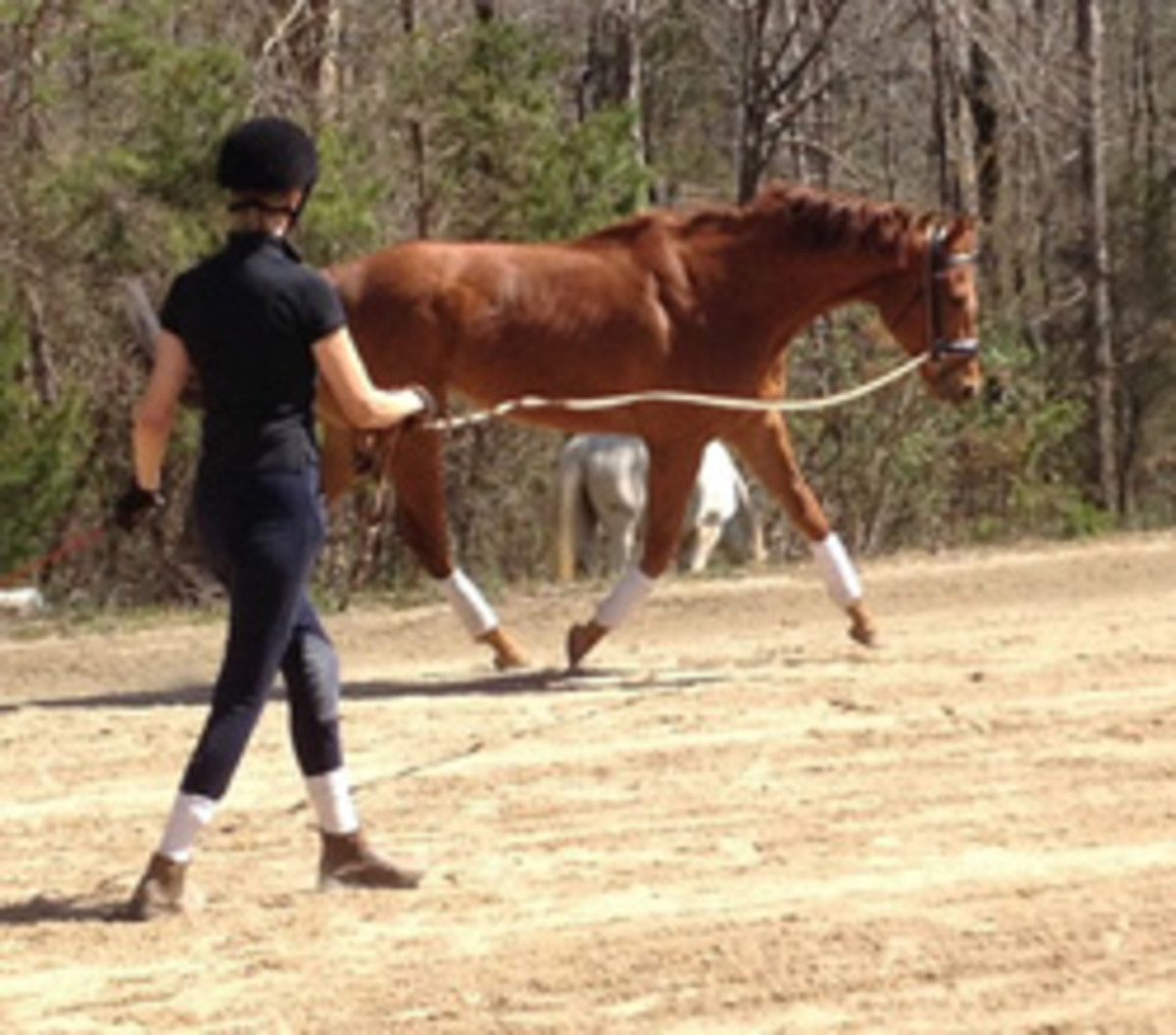
I am quite pleased with the consistency of the balance Forrest demonstrates at the trot. The straighter he is, the stronger he will become behind, as each hind leg is now loading evenly. Switching directions to the left, wherehe is more apt to carry too much of his weight on that side, if he momentarily falls in, he reacts as I would expect, inverting, with a loss of confidence coupled with tension and rushing.
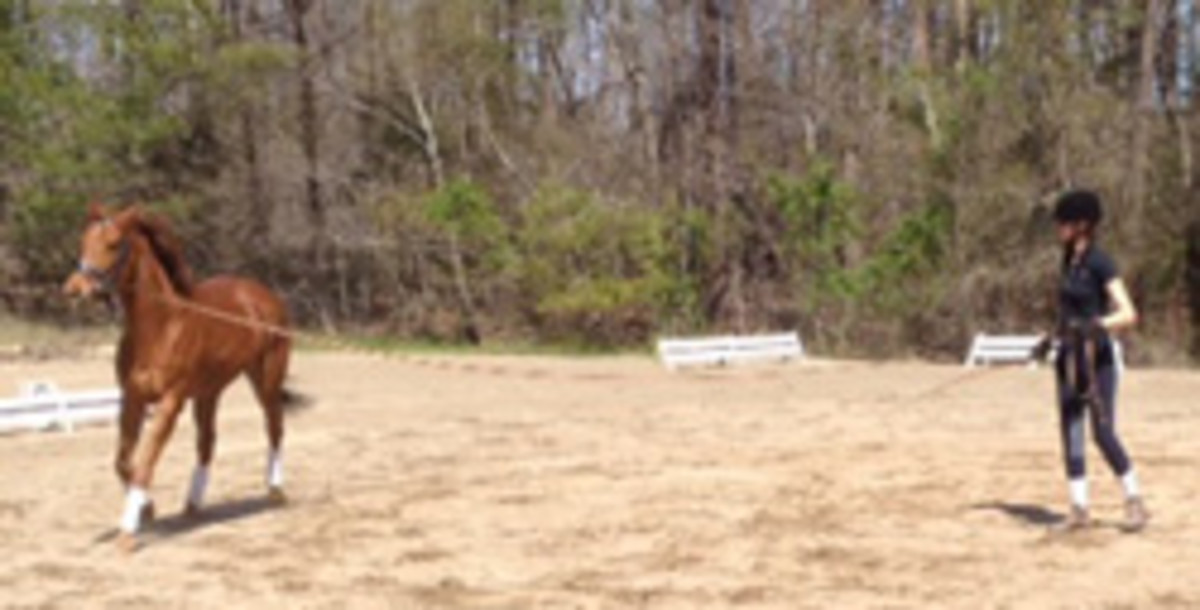
Just as I did at the walk, I then step in, moving his shoulders back in line with a point of the whip, and he rediscovers his balance and rhythm demonstrating this with his relaxed outline.
This has been an excellent lesson and I couldn’t be happier with how obedient Forrest was and how comfortable in the mouth he appeared. Keeping these sessions short doesn’t stress his muscles or joints and keeps the work fresh and interesting to him. The best feedback, for me, is how he steps into such a thoroughly relaxed and stretching walk during each walk transition, with a complete absence of tension.
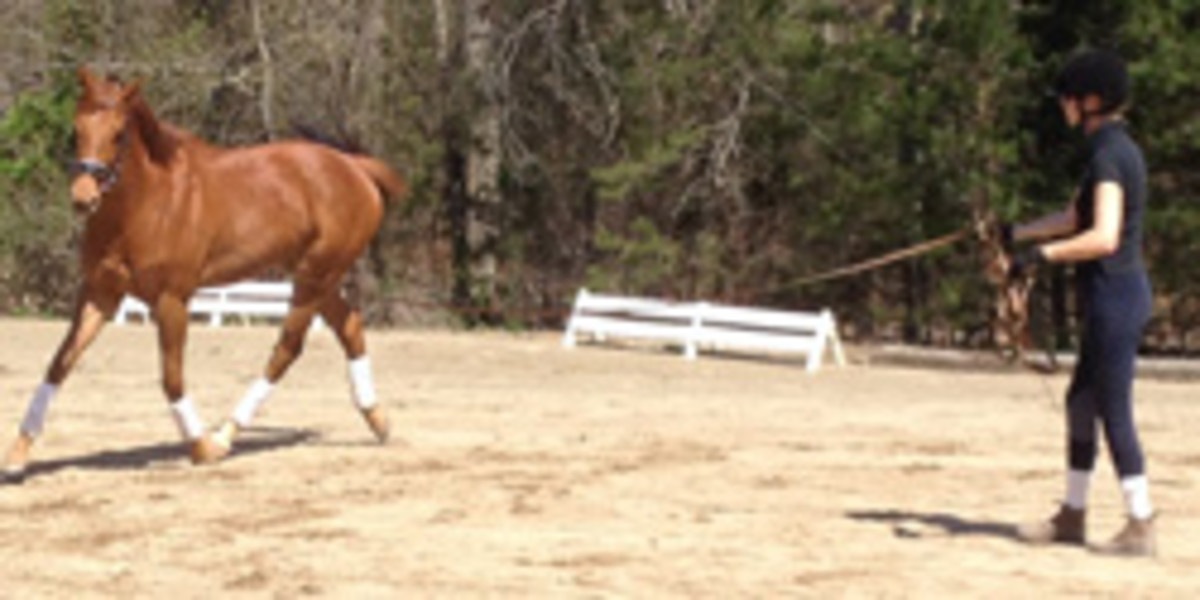
This is all good stuff to build our Training Pyramid upon, and he’ll be ready to introduce to the canter, next time.










